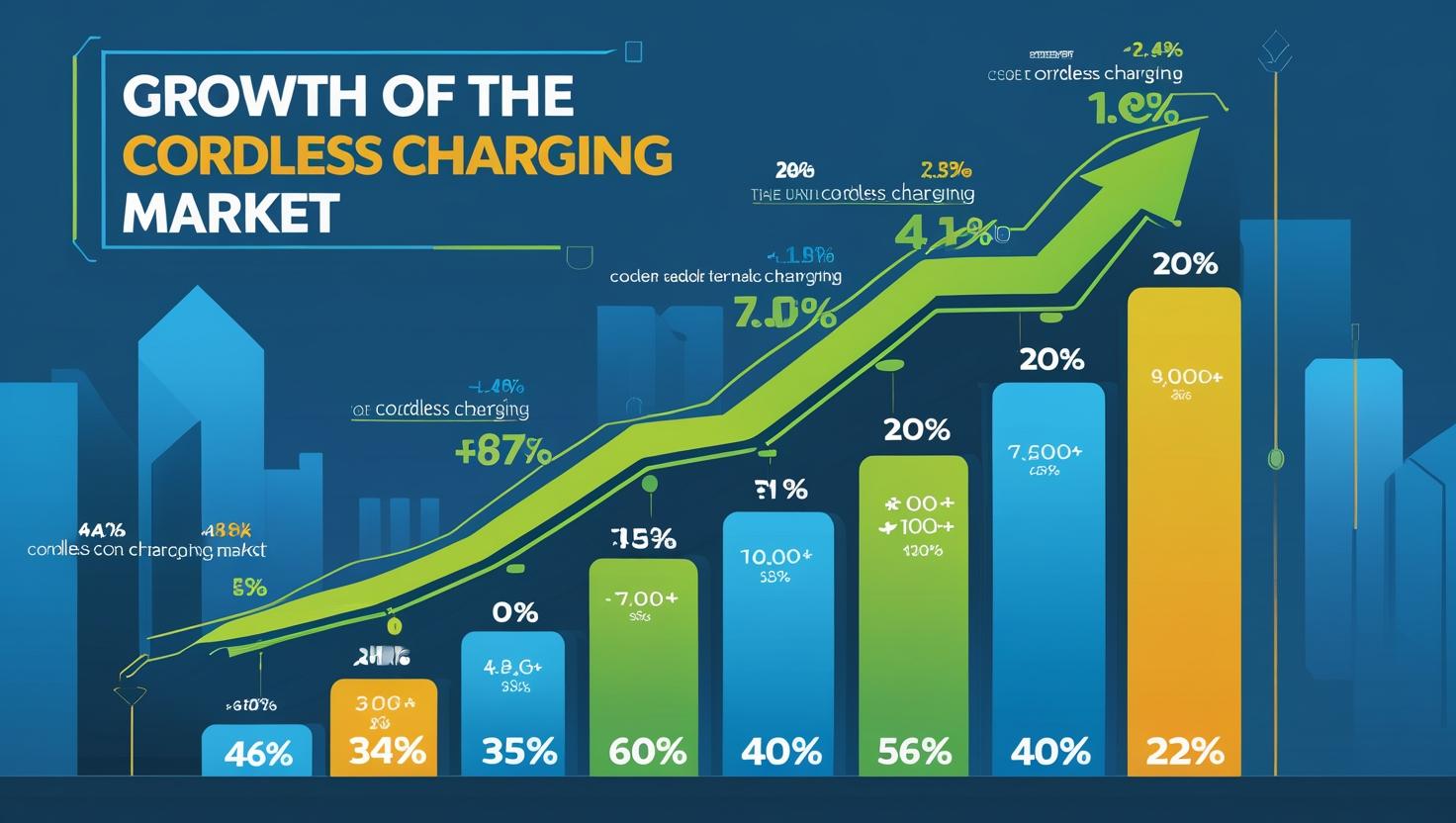As the world becomes increasingly mobile and connected, the demand for seamless, cable-free power solutions is growing at a rapid pace. Cordless charging, once a novelty in smartphones and wearables, is now poised to transform the way we power everything from consumer electronics to electric vehicles (EVs) and industrial equipment. With technological advancements, evolving consumer expectations, and industry-wide innovation, 2025 marks a pivotal year in the race toward truly wireless energy ecosystems.
Cordless Charging: More Than Convenience
At its core, cordless charging—often referred to as wireless power transfer (WPT)—aims to eliminate the need for physical connectors by transmitting power over short distances via electromagnetic fields. Initially adopted in consumer electronics for convenience and aesthetics, the technology has matured into a robust, scalable solution with applications across multiple sectors.
Today’s leading technologies include inductive charging, resonant charging, and emerging radio-frequency (RF) and infrared-based wireless power systems, each offering varying levels of power, range, and efficiency. As adoption scales up, the focus is shifting from simple charging pads to true spatial freedom, where devices charge automatically when within a defined radius or zone.
Key Drivers of Growth
Several factors are accelerating the adoption of cordless charging technologies. First, the proliferation of IoT devices has created a need for low-power, maintenance-free energy sources—especially in remote or hard-to-reach locations. Battery replacement and wired charging are no longer scalable for billions of sensors, wearables, and medical devices.
Second, the electrification of transportation is driving innovation in high-power wireless charging. Automakers and infrastructure developers are increasingly exploring dynamic wireless charging—where electric vehicles recharge while in motion—as a way to reduce range anxiety and improve the efficiency of urban mobility systems.
Third, the growing popularity of smart homes and offices has created demand for integrated, cordless power systems. Furniture embedded with wireless chargers, kitchen appliances that draw power wirelessly, and public charging zones are no longer conceptual—they’re becoming mainstream.
Download PDF Brochure @ https://www.marketsandmarkets.com/pdfdownloadNew.asp?id=640

2025 Technology Trends to Watch
In 2025 and beyond, several technological trends will define the evolution of the cordless charging industry:
1. Long-Range Wireless Power Transmission
Companies are pushing the boundaries of distance, developing technologies that can transmit power over several meters—enabling true room-scale or even building-scale wireless energy systems.
2. Smart Charging Ecosystems
AI and IoT integration will allow devices to manage their charging cycles intelligently, optimizing energy consumption, extending battery life, and prioritizing critical devices during power surges or outages.
3. Multi-Device, Multi-Standard Charging Platforms
Consumers want simplicity, and the future lies in platforms that can simultaneously charge multiple devices—regardless of brand, size, or power requirements—on a single surface or within a wireless zone.
4. Sustainability and Energy Efficiency
Efficiency is paramount. New designs are focusing on reducing energy loss during transfer, with innovations in materials, coil architecture, and electromagnetic shielding playing key roles.
5. Safety and Regulation Standards
As adoption increases, the need for unified global standards and regulatory compliance becomes critical—especially for applications involving high voltages or public exposure.
Applications Expanding Beyond Consumer Devices
While smartphones and wearables will continue to be the largest adopters in the short term, the real growth lies in emerging and industrial applications. In healthcare, cordless charging ensures uninterrupted power to critical medical implants and monitoring devices. In logistics and manufacturing, wireless charging for AGVs (automated guided vehicles), drones, and handheld tools reduces downtime and cable wear. In smart cities, wireless charging pads embedded into roads or parking spaces could become standard infrastructure.
Challenges and Opportunities
Despite rapid progress, several challenges remain. Power efficiency over distance, interoperability between standards (such as Qi and AirFuel), and initial deployment costs are all areas needing attention. Additionally, public perception around safety, electromagnetic exposure, and device compatibility must be addressed through education and regulation.
However, these challenges also present massive opportunities for startups, OEMs, and infrastructure providers. As innovation continues and economies of scale reduce costs, cordless charging will evolve from a feature to an expectation.
Conclusion: A Wireless Future Within Reach
The race to wireless charging is no longer theoretical—it’s happening now. With strong momentum from tech giants, energy companies, automotive leaders, and policy makers, the cordless charging industry is headed toward a future where power is as ambient and accessible as Wi-Fi.
By 2029, we may look back at tangled cords and single-device charging pads as relics of a wired past. The next chapter in connectivity is not just faster or smarter—it’s completely untethered.
Cordless Charging Industry – FAQ
1. What is cordless charging?
Cordless charging, also known as wireless charging or wireless power transfer (WPT), is a technology that transmits electrical energy from a power source to a device without using physical connectors or wires. It typically uses electromagnetic fields, such as inductive or resonant coupling, to deliver energy safely and efficiently.
2. How does cordless charging work?
Most cordless charging systems rely on a charging pad or base and a receiver coil built into the device. When the two are aligned, an electromagnetic field is created, allowing the receiver to draw power and convert it into battery charge. Newer technologies allow for multi-device, longer-range, or through-the-air charging.
3. What types of devices support cordless charging?
Cordless charging is common in:
-
Smartphones and tablets
-
Wearables (smartwatches, fitness bands)
-
Wireless earbuds and accessories
-
Electric vehicles (EVs)
-
Medical devices and implants
-
Drones, robots, and industrial tools
